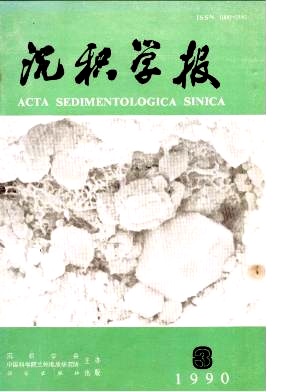ORDOVICIAN IN THE EASTERN SIDE OF KANGDIAN
- Received Date: 1988-02-24
- Publish Date: 1990-09-10
Abstract: A set of typical storm deposits have been recognized in the upper part of early triassic the first member (Fei Xianguan Formation) of Liang Fengya, Chongqing. The lithcharacter of tempestite is dull purple calcirudite and calcarenite which includes greyish white micritic h'mestone. The total thickness of tempestite is 20m, among which any biogenic and trace fossils have not been found. The section can be divided into 11 unit tempestite beds in total and each can be regarded as a complete rhythmic unit of tempestite (Fig. 1) with clear scouring top partly removed 20-40cm in thickness. The lag gravels bed (a) is generally 20-50 cm thick on the scouring plane. The covering deposits upward are the graded bed (b), the evenly bed (c), the hummocky bed (d) and the ripple bed (e). Above the horizontal and wavy bed (f) are normal sediments in fair-weather. A complete sequence of storm deposits from bottom to top may be divided into three parts and six section (Fig. 2, A). According to development degree in the unit and characteristics of lag gravel in the section, three kinds of texture of the section may be divided: 1.the allochthonous lag gravel proximal tempestite; 2.the sedentary type lag gravel proximal tempestite; 3.the repeating type proximal tempestite. The storm deposits formed under the condition from storm peak to wind force subsidence in region. Period of storm peak, tempestuous currents raid semi-solidifying carbonate sediments below the normal wave base so that they become the rip-up intraclasts of different sizes. At the time, the scouring plane of various shapes are formed on the surface of sedimentary. The broken carbonate intraclasts formed the sedentary or allochthonous type lag gravel. The fluid possesses the nature of density flow since storm disturbs to take differential suspension for fine grain. When storm subsided, the suspended matter early or later fall to form the graded bed, the evenly bed, the hummocky bed, the saucer-shaped structures and ripple bed. After the storm stopped, it is sediments in fair-weather. The tempestite is not congenetic material. The particle is the carbonate intraclast in the epicontinental basin while the matrix is the clay and silt in the shoreside. Both of them are formed by mixing below the normal wave base above the storm wave base.
| Citation: | Tong Xisheng, Tang yong. ORDOVICIAN IN THE EASTERN SIDE OF KANGDIAN[J]. Acta Sedimentologica Sinica, 1990, 8(3): 121-127. |






 DownLoad:
DownLoad: